
Related
We turn to some archival footage of Brad Will, the U.S. journalist and activist shot dead in Oaxaca on Friday. We play a recording of Brad from the late 1990s at a time when he hosted a radio show on the pioneering microradio station “Steal This Radio” and a recording of Brad talking about efforts to prevent New York City from demolishing a squat on the Lower East Side. [includes rush transcript]
We turn to some archival footage of Brad Will. The following was recorded in the late 1990s at a time when he hosted a radio show on the pioneering microradio station Steal This Radio.
- Brad Will, speaking in 1998. Courtesy of Paper Tiger Television.
Brad is also remembered by many for his efforts to prevent the city from demolishing a squat on the Lower East Side. When the city moved in to demolish the building on Fifth Street he stood atop the roof waving his arms. Brad’s efforts stalled the demolition but the city eventually leveled the building which housed a cafe, a meeting place and a performance space. Brad later talked about the building in a program produced by Paper Tiger Television called ”ABC Survives, Fifth Street Buried Alive.”
- Brad Will, excerpt of program, ”ABC Survives, Fifth Street Buried Alive.” Courtesy of Paper Tiger Television.
Transcript
AMY GOODMAN: We turn to some archival footage of Brad Will. This was recorded in the late 1990s at a time when he hosted a radio show on the pioneering microradio station, “Steal This Radio.”
BRAD WILL: I think for the FCC, micro media that is non-commercial, anti-profit, community-based, is poison to their program of supporting corporate control of the media. And what they are interested in is supporting the National Association of Broadcasting and their complete leveling of culture in the United States, their complete clear-cutting of American tastes and values and trying to propagate through Congress, through elected officials, through lobbyists, through huge amounts of money being thrown into the media spectrum, their ability to control what people think. And that’s really what’s at stake, is the free flow of ideas in people’s minds that is so much controlled by the media as we know it and especially the mass media that has the public ear and that really dominates people’s lives.
You know, New York is a very isolating place in a lot of ways, and I think the Lower East Side is one of the few places that’s actually still a community. And it’s easy for people to kind of fall into that go home, turn on the TV and eat their dinner and try to survive mentality that takes so many people away from an awareness of what’s really going on, and on a micro level, on a local level, a community level, you know, that there’s a community space right down the block that’s under threat. You know, CHARAS/El Bohio has been sold by the city, and it can be stopped. And what people need to know is that it’s possible, it’s not over, or that even if one garden falls, that there are still so many more to save and that there’s still a chance.
And the concrete things is that people come up to me and talk to me about things they want to be heard on the radio, events that they want to propagate and demonstrations that they want people to show up for. And, you know, people come up to me and tell me about my show and are really appreciative, you know, about what I’m trying to do and what we’re all trying to do: save this neighborhood, save ourselves.
AMY GOODMAN: Brad Will is also remembered by many for his efforts to prevent New York City from demolishing a squat on the Lower East Side. When the city moved in to demolish the building on Fifth Street, he stood atop the roof waving his arms. Brad’s efforts stalled the demolition, but the city eventually leveled the building, which housed a café, a meeting place and a performance space. Brad later talked about the building in a program produced by Paper Tiger Television called ABC Survives, Fifth Street Buried Alive.
BRAD WILL: We were making a home out of a crumbling building. The interior of the building needed help, and we brought that building back to life. It was standing strong. And the only reason it was standing was because people were living in it. If we had let it go the way the city wanted it to go — they tore out the stairwell, they punched holes in the roof. The water — the rain was rotting that building from the inside out. We replaced the joists. We rebuilt the floors. We sheetrocked the walls and made the building alive. What did they do? They killed it. That building is over a hundred years old. It was standing strong.
AMY GOODMAN: That was Brad Will, as he was talking about squats in New York. Leslie Kauffman, can you talk about these squats, for people who have never even heard the term?
LESLIE KAUFFMAN: Well, they were abandoned buildings that had been just standing vacant for years and years all over the city, but there was a particularly strong movement to rehabilitate these buildings in the Lower East Side. And really, they were homesteaders. I mean, it’s a longstanding all-American tradition. They took over these abandoned properties, and they fixed them up and created spaces for people to live who had nowhere to live, and much as those who created the community gardens in New York City were homesteaders, too. They took over abandoned lots and cleared them of bottles and used needles and all the garbage that was there and turned them into spaces of beauty and hope.
And Brad so much believed in creating that kind of hope and beauty in the world and found himself in conflict with the authorities over and over again, because, for example, the City of New York wouldn’t let that stand, wouldn’t let the squats continue, wouldn’t let homesteaders get the deed to their own place, wouldn’t let the community gardens flourish.
AMY GOODMAN: I wanted to go back to Gustavo Esteva in Oaxaca, the columnist for La Jornada. You knew Brad, and I was wondering the significance of having U.S. journalists and activists come down to Oaxaca. How do you see it?
GUSTAVO ESTEVA: He was in our office a week ago. And you have been listening to some examples of Brad’s passion for life and beauty. He had a genius to discover where life was, where it was flourishing, and sharing his own passion with our passion for life. It is really one of the many paradoxes that he died in his search for life. And it is also a paradox that he is now being used as a pretext for more killing and more oppression. His death is really used now by the authorities saying that it is a justification, it is because of this kind of violence that they are bringing in the police for more oppression and more aggression and more killings.
Yes, Brad was with us just a few days ago in our office, with our people, working together. We have been involved in one of the activities of Indymedia. And he was with us and with [inaudible] — that is one of our collaborators. He was very close to [inaudible], and both [inaudible] and Brad were working together in their supporting. And, of course, also Brad had this specific genius for reporting what was happening, what he was capturing, these living elements that he was discovering in the middle of the movement.
AMY GOODMAN: John Gibler, there is a protest planned for today in Oaxaca?
JOHN GIBLER: Correct. They’ve — yesterday the APPO provisional leaders, and as well just the word that was running through the crowds on the street, was to pull back at night, to not fall into provocations, to not fall into violence, to take back the streets during the daytime today.
As Gustavo mentioned, the control of the city depends how you define “control.” If it’s presence of armor and automatic weapons, then the mainstream media might think that the police have control. But if it’s the spirit of the people and the people taking to the streets, even in the face of continued paramilitary attacks and the police invasion, then the people of Oaxaca strongly retain control of the city.
I was greatly impressed yesterday by the numbers of people that came out to fill the barricades, and people from all walks of life, entire families, people holding their children, walking right up to the police to put flowers in their armor and then march with them instead of confronting them. And I think that the response today will be similar, that it will be thousands and thousands of people taking to the streets to march and to stand in the barricades.
AMY GOODMAN: Gustavo Esteva, do you see Oaxaca today as Chiapas, what, more than ten years ago?
GUSTAVO ESTEVA: We are the same. Chiapas is still alive here in Oaxaca. And in a sense, we are a fruit of Chiapas. It was an awakening created by Chiapas. When in Chiapas ten years ago they said, “Basta! Enough! We have enough of this system, of this oppression,” that was something that awakened us here in Oaxaca. We had, of course, our own long struggle, but Chiapas is here with us right now. We are joining in the same kind of struggle for democracy now, for our definition of our own life. “We want to define us,” the Zapatistas said. This is exactly what we are saying today in Oaxaca. We want a world in which many worlds can be embraced. We want a harmonious coexistence of the difference.
Perhaps the Oaxaca movement today, it is one of the best expressions of one element, brilliant element, of contemporary movements all over the world. That is, a policy of one no, many yeses, in which in the past you had movements that would have one no and one yes and saying an affirmation to something and denial to something. Here, we have a no to something and accepting the plurality of yeses, the plurality of affirmations, the plurality of life. Here in Oaxaca, you have — this is the only state, in which the majority of people are Indians, and they belong to sixteen different indigenous cultures. Here, we have the plurality as — it is also natural and cultural plurality via diversity. And you have this expression of a movement that is saying no to this government or no to this oppression, no to this kind of political regime, no to this kind of economic organization. But we are accepting, we are not attached to any specific ideology or any specific leader or any specific organization. We have many yeses. We are accepting the plurality of our world, and we want to find ways for the harmonious coexistence of these different people.
AMY GOODMAN: Gustavo Esteva, we are going to turn now to a tribute to Brad Will from his friend and fellow musician, David Rovics.


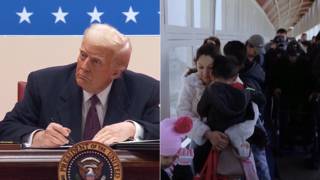

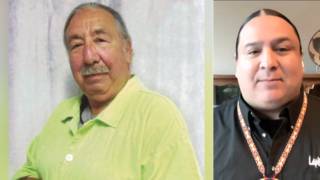
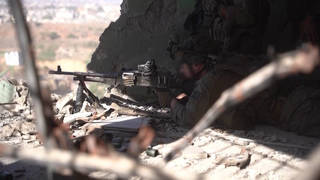




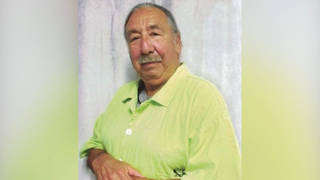

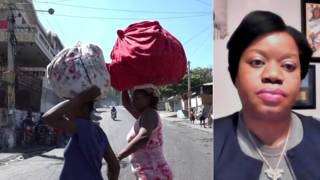
Media Options